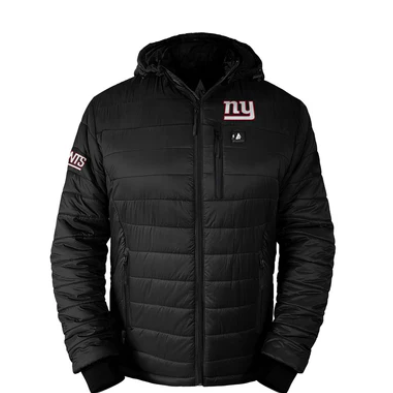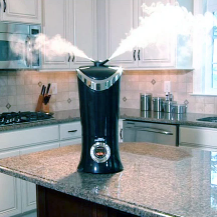
For Climate Change and Social Unrest Vulnerability
How to Do a Risk Assessment
Risk assessments provide a systematic approach to identifying, evaluating, and responding to potential risks that could disrupt lives, property, or organizations. In today’s volatile world, where climate change and social unrest are escalating, risk assessments are essential not just for businesses but also for personal safety. By identifying potential threats and developing strategies to mitigate them, we can adapt to evolving challenges and build resilience into our homes, communities, and workplaces.
What Is a Risk Assessment?
At its core, a risk assessment involves examining the likelihood and impact of various potential hazards. Traditionally used in industries like finance, healthcare, and engineering, the method has expanded to assess risks in areas such as environmental and social factors. For instance, a climate change risk assessment evaluates the vulnerabilities associated with environmental events, including extreme weather patterns, floods, fires, and other natural disasters that are increasing in frequency due to climate change.
In the context of climate change and social unrest, risk assessments go beyond identifying immediate dangers. They also explore long-term vulnerabilities, such as infrastructure resilience, economic impacts, and social consequences. This proactive approach helps prepare us for disruptions that can strain resources, reduce quality of life, and increase vulnerability to future crises.

Importance of Risk Assessments for Personal and Business Protection
Whether formal or informal, a risk assessment enables individuals and organizations to anticipate risks before they materialize. The process of evaluating hazards, vulnerabilities, and potential impacts promotes preparedness on multiple levels:
- Personal Level: Assessing risks helps individuals and families anticipate possible scenarios (e.g., power outages, social unrest) and take preventive actions like stocking emergency supplies, identifying safe locations, and maintaining communication channels.
- Business Level: Risk assessments allow businesses to identify vulnerabilities in their operations and supply chains. By understanding potential threats, companies can implement contingencies, such as backup power solutions, crisis communication plans, or even remote work policies to ensure continuity during disruptions.
Risk assessments are critical for individuals and organizations alike, enabling proactive measures that protect assets, people, and the community from unforeseen disruptions.
Universal Vulnerability to Climate and Social Unrest
No region or socioeconomic group is immune to the impacts of climate change and social unrest, although vulnerabilities differ depending on geographic location and financial position. A high-income, developed nation may face risks like property damage from hurricanes or wildfires, while a low-income region may struggle with limited resources to address climate-related droughts or food scarcity. Urban populations may encounter social unrest, protests, or violence, while rural areas may face isolation during extreme weather events.
For example, in parts of the United States, hurricane-prone states like Florida deal with destructive storms, while California grapples with increasing wildfires. In contrast, droughts in sub-Saharan Africa are intensifying food insecurity, leaving vulnerable populations with limited options for adaptation. Conducting tailored risk assessments allows individuals and organizations to recognize and plan for region-specific risks.

Steps to Conducting a Risk Assessment for Climate Change and Social Unrest Vulnerability
Effective risk assessment for climate change and social unrest includes the following steps:
- Identify Potential Hazards and Impacts: Start by listing possible climate-related hazards (e.g., floods, extreme temperatures) and social risks (e.g., protests, economic instability). Consider local trends and consult credible data sources, like climate reports and government advisories.
- Assess Vulnerabilities: Identify which people, structures, or resources are most likely to be affected by these hazards. Consider factors such as the physical state of infrastructure, accessibility to resources, and the resilience of local systems to disruption.
- Evaluate Probability and Consequence: Estimate the likelihood of each hazard occurring and the severity of its impact. This analysis helps prioritize risks and allocate resources effectively.
- Develop Mitigation and Adaptation Strategies: Create a plan to minimize the impact of each risk. This may involve investing in sustainable infrastructure, implementing contingency plans, or educating individuals on emergency preparedness.
- Regularly Update and Reassess: Climate change and social dynamics are continuously evolving. Reevaluate risks periodically to adapt to emerging trends, and refine strategies as necessary.
Conclusion
Conducting a risk assessment for climate change and social unrest empowers individuals, families, and organizations to prepare for an uncertain future. By identifying potential threats, understanding vulnerabilities, and planning mitigation strategies, we can build a resilient society better equipped to withstand environmental and social disruptions. As climate challenges grow, regular risk assessments can become essential tools for safeguarding lives and fostering a safer, more adaptable world.
Tony Redman
11/09/24
A4C Sustainable Solutions Partners

BLUETTI SUSTAINABLE PRODUCTS
At A4C, we promote proactive steps to mitigate the impacts of extreme climate occurrences. Those of us in the northern hemisphere must prepare for extreme cold and potential power outages. BLUETTI is the web's #1 choice for the high-quality portable power station, and emergency power equipment.

ACTION HEAT SUSTAINABLE PRODUCTS
Action Heat is the most complete and versatile heated clothing brand on the market. Experts in heated apparel, with 10+ years in the heated clothing category;Action Heat has tested, worn, and played with every heated garment on the market. Action Heat is the perfect blend of quality, performance, and price.

SYLVANE SUSTAINABLE PRODUCTS
Sylvane offers a wide selection of air quality and air treatment products from leading brands in the industry. Customers are supported with in-depth information and buying guides for all of our products which include: air purifiers, dehumidifiers, air conditioners, humidifiers, and heaters.
